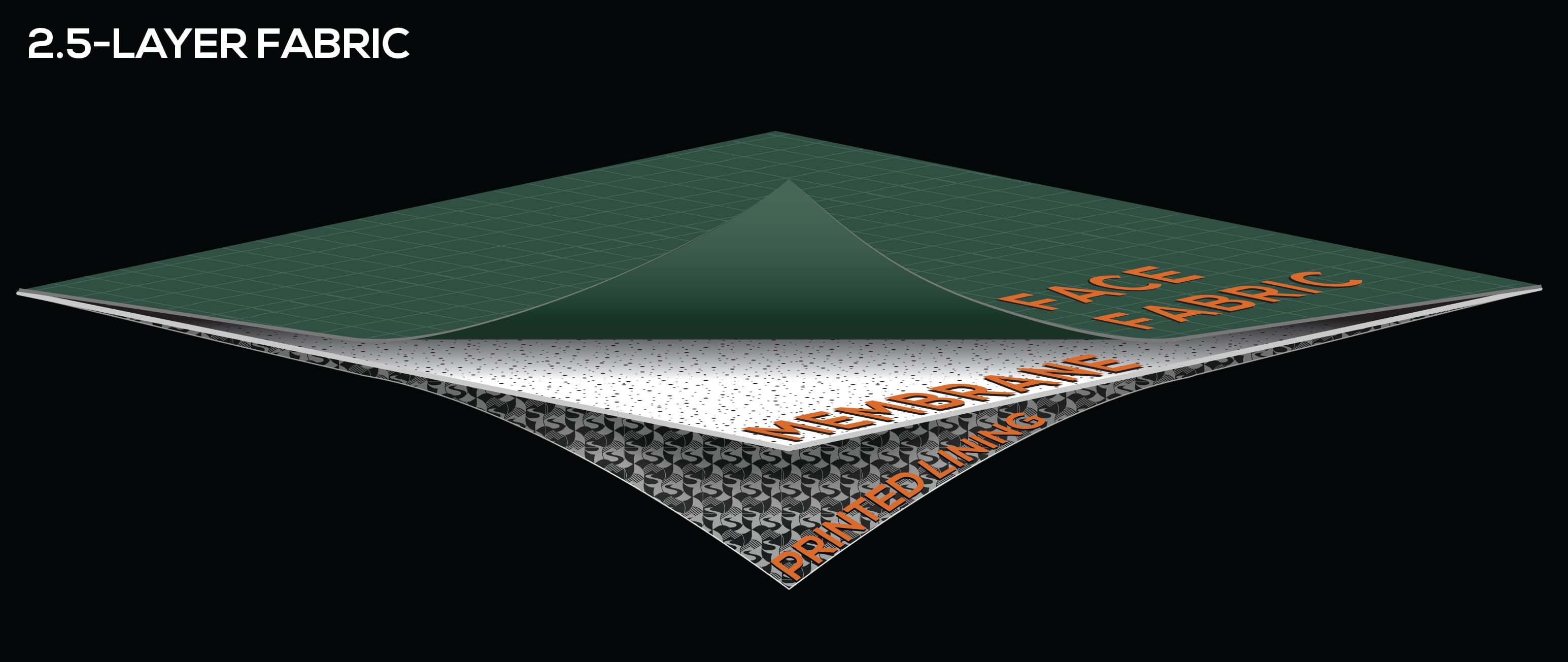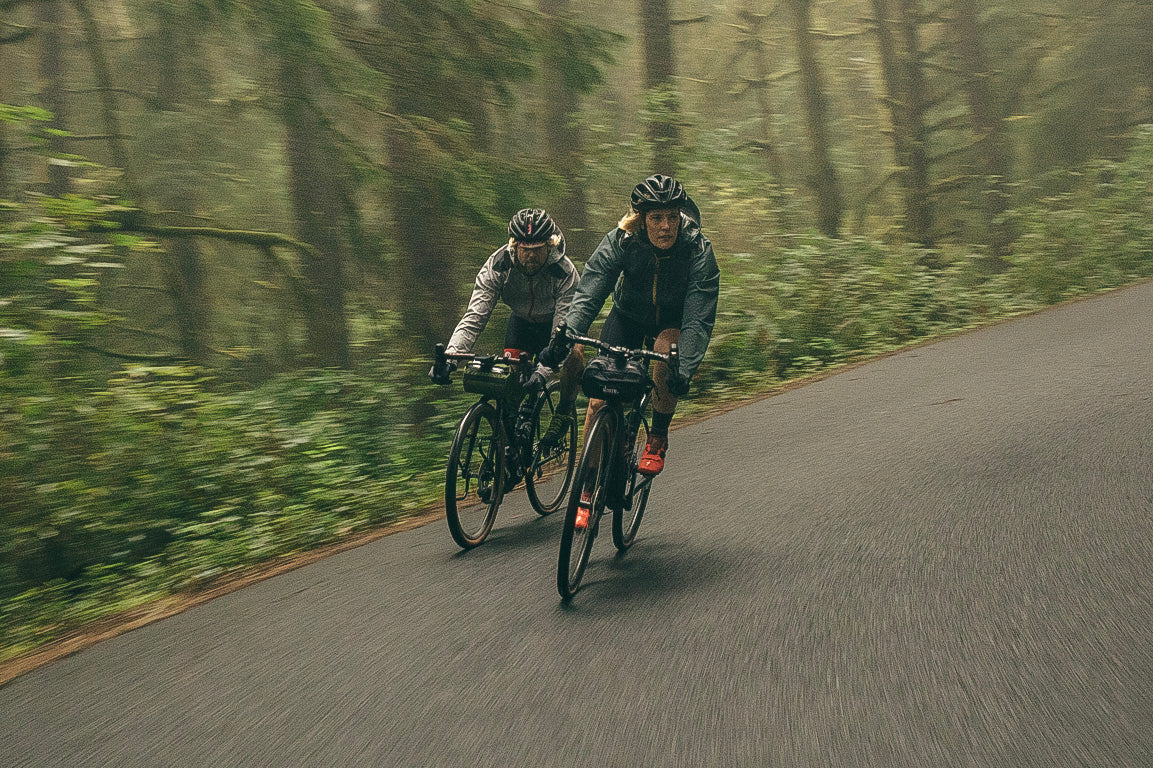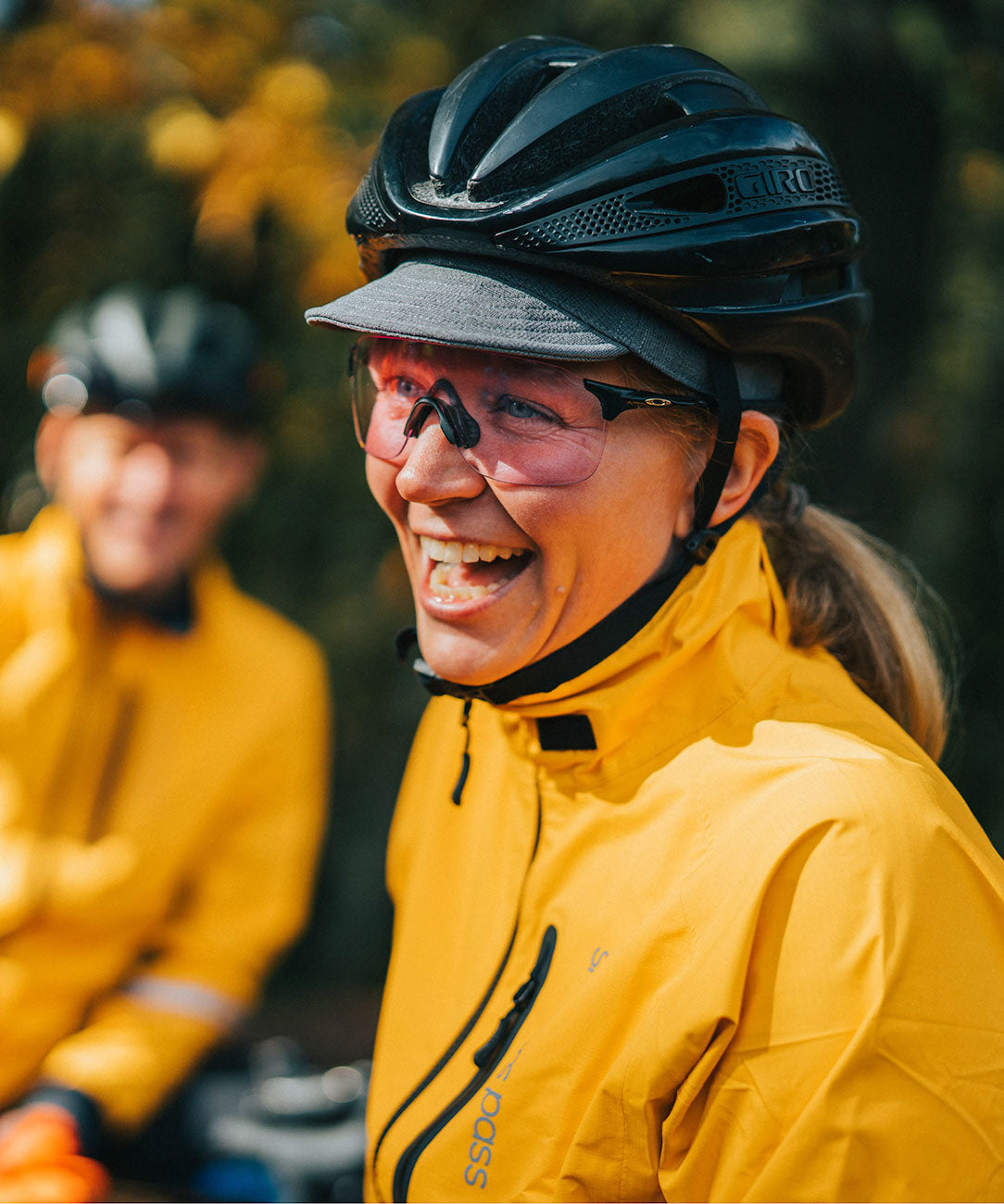
Peeling Back the Layers: What's the Difference Between 2, 2.5 and 3 Layer Waterproof Jackets
As the days shorten and temperatures begin to drop, cycling and other outdoor activities can become a less appealing or more challenging proposition. The right gear can help keep you focused on the fun or your performance and not on worrying about how the weather might affect you or your plans. Whether you’re a new bike commuter gearing up for your first rainy season, or an experienced roadie looking for a winter cycling jacket, or you’re looking for general wet weather gear for hiking and camping, the type of waterproof-breathable fabric used is one of the most important things to consider when choosing the right garment for your needs. Below, we take a look at the types of fabric construction used in our products and their characteristics.
3-Layer Fabrics: Rugged and High Performance3-layer waterproof-breathable fabrics are common in high end rainwear. As the name suggests, these fabrics are made from 3 layers which are laminated together. The waterproof-breathable membrane is sandwiched between an outer face fabric and an inner lining, most commonly a lightweight tricot fabric. The lining fabric helps to provide some texture and protects the membrane. It also helps to prevent the fabric from clinging or feeling clammy.

Three layer constructions are the most durable and will usually offer the highest level of waterproof-breathable performance. This makes them a good choice for use in a 4 season or winter cycling jacket, as well as other outdoor pursuits where one will experience prolonged exposure to harsh conditions.
Even though they’re slightly heavier, 3-layer fabrics can be strong performers in warmer climates or for higher levels of physical exertion due to their breathability and tendency to feel less clammy or clingy when you break a sweat.

2.5-Layer Fabrics: Lightweight & Packable
2.5 layer fabrics share a lot of characteristics with 3 layer fabrics. However, instead of a fabric lining, a print is applied to the inside of the fabric. This print is the “half layer” in a 2.5-layer fabric. The print serves more or less the same purpose as a fabric lining, protecting the membrane and providing a more comfortable feel. While the printed half layer doesn’t do any of this as effectively as the fabric lining in a 3-layer fabric, it does have some of its own benefits. Garments made from 2.5 layer fabrics tend to be very lightweight and packable, and they’re typically less expensive than their 3 layer counterparts.

A Jacket made from 2.5 layer fabric is a good choice whenever packability is a concern. Our Elements Jacket is a great jacket to reach for when there are showers in the forecast, but you don’t want to lug around a heavier duty winter cycling jacket when the weather clears up. The same goes for commuting. In shoulder seasons, weather might be wet and cool in the morning but clear up by the time you ride home, so having a jacket that easily fits into your backpack or pannier can be a major plus.

Budget Friendly & Lightweight
2-Layer fabrics are made by applying a membrane to the face fabric directly, with no lining or print applied. Often this is done via coating the fabric rather than a lamination process. 2-Layer waterproof-breathable fabrics are highly packable and can offer the lightest weight, but usually this comes at the expense of durability and/or breathability. Although you won’t find this in Showers Pass products, 2 layer fabrics are often coupled with a drop lining, a loose mesh fabric inside the garment that serves to protect the membrane. This also adds significant bulk to the garment.

2 layer fabrics are the least expensive to produce, so you’ll typically find them used in more moderately priced garments.







